How to Plant Succulents Indoor: Top 9 Guide to Cultivating Dazzling Indoor Greenery
Welcome to the enchanting world of indoor succulents! With their fascinating shapes, vibrant colors, and low-maintenance nature, succulents are the perfect choice to grace your room with the touch of nature’s marvels. Here is how to plant succulents indoors.
Picture this: sun-drenched windowsills adorned with the charming collection of succulents, each one with its own unique personality. From the spiky allure of Echeverias to the adorable rosettes of Haworthias, these captivating plants will mesmerize you with their diversity. But here’s the exciting part – did you know that growing succulents indoors is rewarding and the great way to unleash your creativity?
Now, let’s embark on the journey that will teach you the art of how to care for succulent plants indoor. Are you ready to learn how to bring these fascinating plants into your oasis? How about discovering the secrets of proper care and propagation techniques and arranging succulent compositions that will make your friends green with envy?
So, grab your gardening gloves and prepare to dive into the delightful world of indoor succulents. Along the way, we’ll unravel the answers to intriguing questions like, “Can succulents survive in low light conditions?” or “What’s the secret behind those chubby leaves?”
Get ready to unlock the secrets of how to plant succulents indoors, and let the succulent adventure begin!
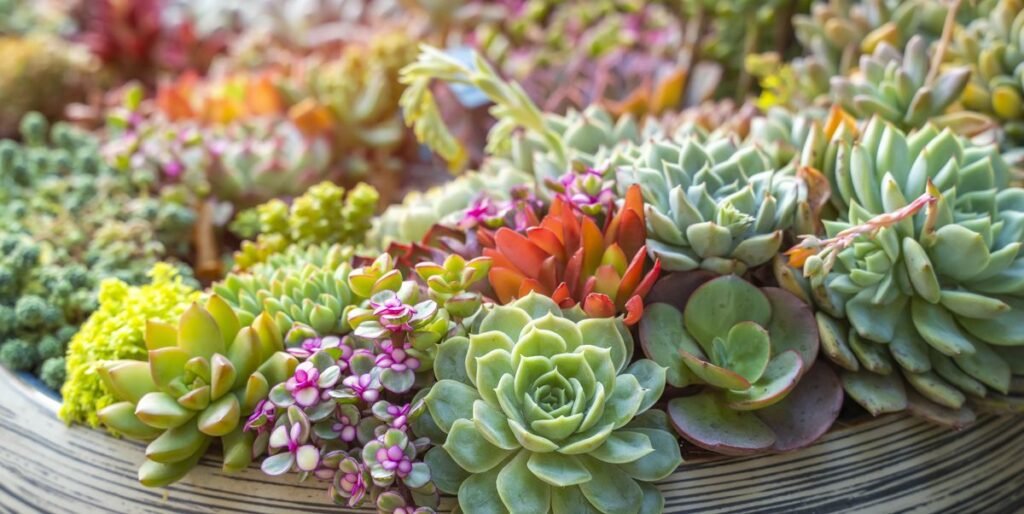
Tips on How to Grow Succulents Indoor
Quenching the Thirst: Nurturing Succulents with Watering Wisdom
Watering properly is important for the health of your indoor succulent. Knowledge of the water needs of succulents is essential, as they have unique requirements due to their ability to store water in their leaves and stems. Establish the watering schedule based on the specific succulent species and environmental conditions to prevent overwatering or underwatering. When watering, use techniques such as the soak and dry method, It is recommended to let the soil dry out before watering again. Watch for signs of overwatering, such as yellowing leaves or mushy stems, and adjust your watering frequency accordingly. Avoiding waterlogged soil and preventing root rot by providing adequate drainage is also important.
The Secrets of Sunlight for Thriving Succulents
Proper sunlight exposure is vital for the growth and development of succulents. Determining the ideal light conditions for your indoor succulent depends on factors such as the species and their native habitat. Some succulents plants prefer bright, indirect light, while others can tolerate direct sunlight. Observe your succulent for signs of insufficient or excessive sunlight, such as stretching or bleaching of leaves.

Experiment with different placements to find the optimal spot for your succulent. Consider supplementing natural light with artificial light sources, especially during winter months or in areas with limited sunlight. Rotating your succulents periodically ensures even growth and prevents them from leaning towards the light source.
Crafting the Perfect Soil for Your Green Beauties
Choosing the right soil mix (succulent soil mixture – 45% sandy loam soil, 20% clay soil, 25% stone) is essential for the health and growth of your indoor succulents. The ideal soil for succulents strikes the balance between drainage and moisture retention.
Look for well-draining soil mixes specifically formulated for succulents, or create your own by combining materials like potting soil, perlite, and coarse sand. Adding organic matter, such as compost or peat moss, helps improve soil structure and nutrient availability. How to grow succulents indoor? As succulents grow, they may outgrow their pots, so repotting them in fresh soil with adequate drainage is important to support their continued development.
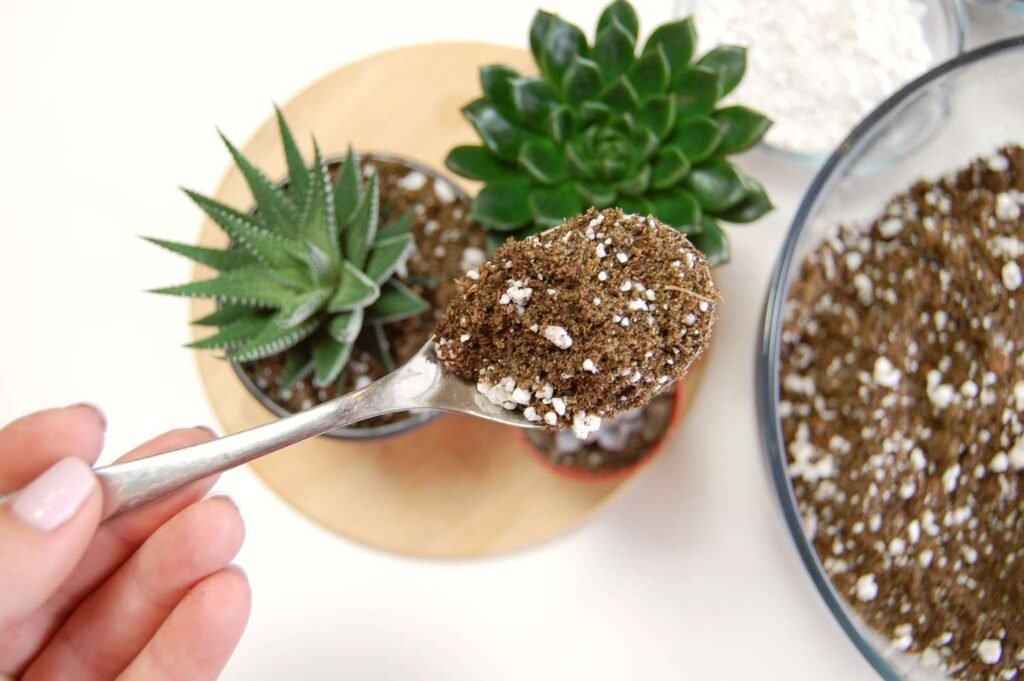
Fertilizing Success: Nourish Your Succulents to Thrive and Flourish!
While succulents plants are relatively low-maintenance plants, they still benefit from occasional fertilization. Understand the nutrient requirements of succulents and choose the suitable fertilizer formulated specifically for these plants. Follow the recommended application method and frequency, typically applying fertilizer during the active growth, usually spring, and summer.
Avoid over-fertilizing, as it can lead to salt buildup in the soil and harm the succulent. Consider natural alternatives to chemical fertilizers, such as organic compost or diluted liquid fertilizers, to provide the gentle nutrient boost.
Magic of Mastering the Art of Propagating Succulents:
Propagating succulents allows you to expand your collection and share the beauty of these plants with others. Various propagation methods include leaf propagation, stem propagation, and division. Before propagating, ensure the parent plant is healthy and mature enough to produce viable offspring. Take care when handling succulent cuttings or pups, as they are delicate. Provide the appropriate environmental conditions, including well-draining soil and sufficient sunlight, to encourage successful root development. Monitor the progress of your propagated succulents and transplant them into their pots once they have established roots.
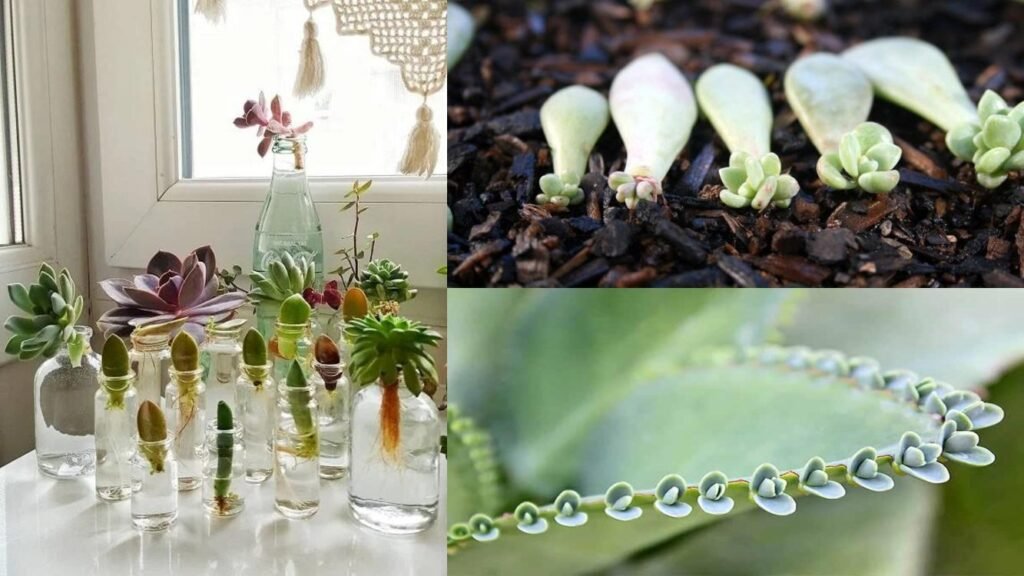
Savvy Succulent Secrets: Mastering Pruning for Thriving Growth:
Pruning is the important aspect of succulent care that helps to maintain their shape, remove dead or damaged foliage, and promote healthy growth. Identify when and why pruning is necessary for your succulents, such as to control their size or encourage branching. Then how to grow succulents indoor?
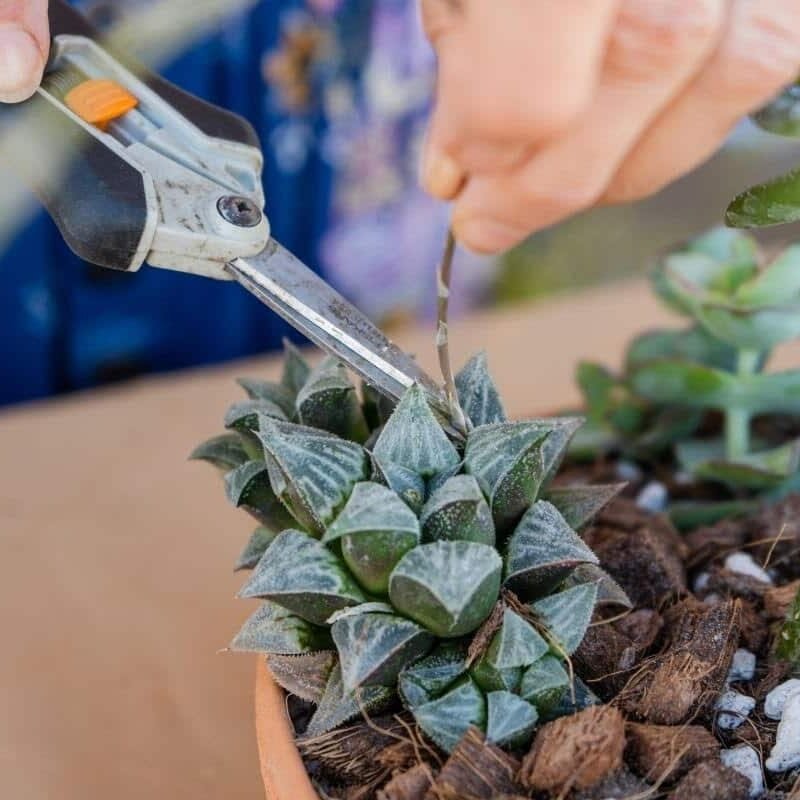
Use clean, sharp pruning tools and make clean cuts to minimize damage. Regularly remove dead or wilted leaves to prevent the spread of disease. Pruning can also help shape your succulents and create the more compact appearance. Adjust watering and sunlight exposure after pruning to support the plant’s recovery and minimize stress. Pruning is the excellent opportunity to propagate any healthy cuttings you remove, allowing you to expand your succulent collection while keeping your plants in optimal condition.
Succulent Showdown: Battling the Beastly Pests:
Even indoor succulents can fall victim to pesky pests. Recognizing the common pests 🪰 which will affect succulents, such as mealybugs, aphids, or spider mites. Preventive measures, such as maintaining proper hygiene, inspecting new plants before introducing them to your collection, and providing good air circulation, can help keep pests at bay. If the infestation occurs, consider natural remedies or organic pest control options, like neem oil or insecticidal soaps, to minimize the use of harsh chemicals. Regular monitoring and prompt treatment will ensure the health and vitality of your succulents.
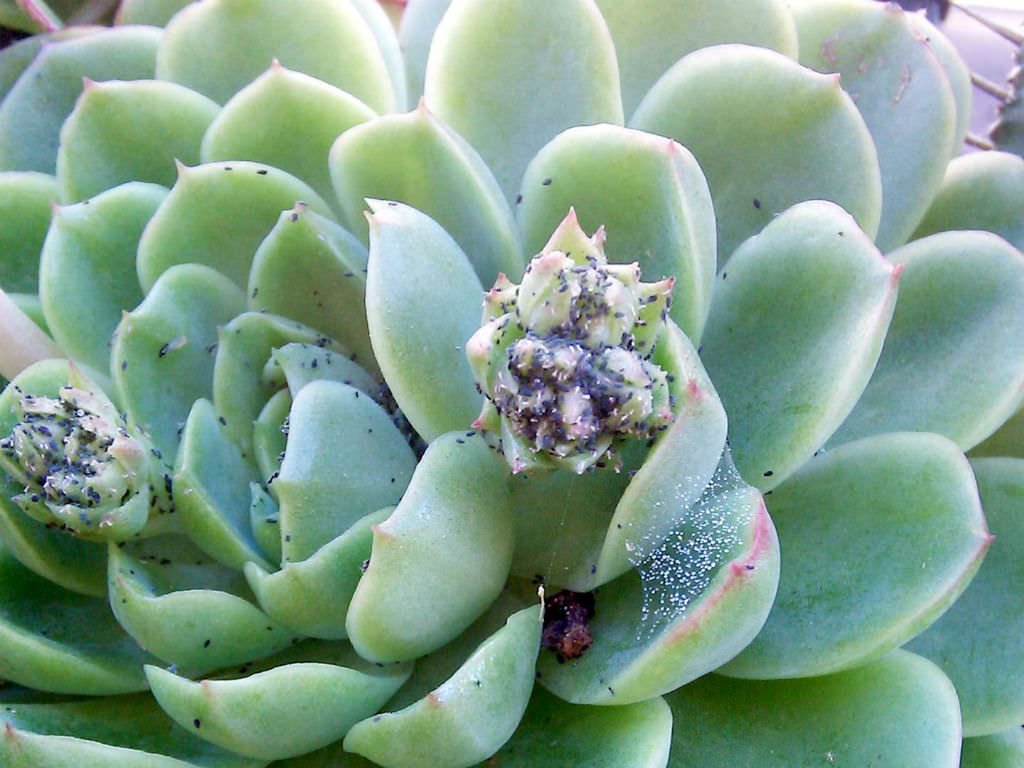
Save the Succulent from Common diseases:
Despite their hardiness, succulents can be susceptible to certain diseases. Recognizing signs and symptoms of common succulent diseases, such as root rot, fungal infections, or bacterial diseases, allows for early detection and intervention. Proper care practices, including well-draining soil, adequate airflow, and avoiding overwatering, can help prevent disease development. If the succulent does become infected, treating and managing the specific disease promptly is crucial. Sterilization of tools and pots and isolating infected plants can help prevent the spread of diseases among your succulent collection.

Thriving Through Frost: How to Plant Succulents Indoor in Winter
Winter brings unique challenges for succulent care due to reduced light levels and colder temperatures. Adjusting watering practices during winter is crucial, as succulents experience slower growth and require less frequent watering. Pay attention to signs of overwatering in the colder months, as reduced light and cooler temperatures can lead to root rot. Protect your succulents from cold temperatures and the frost by providing insulation, such as moving them away from drafty windows or using frost cloths for outdoor succulents. Consider supplementing light with artificial sources to ensure adequate sunlight exposure, especially in regions with limited winter sunlight. By adapting care practices to the winter season, you can ensure the well-being and longevity of your indoor succulents.
By following these guiding points, you’ll be well on your way to successfully planting and nurturing your indoor succulents. You can create the thriving succulent haven in your home with proper watering, sunlight exposure, soil selection, and care techniques. Say hello to the vibrant and delightful collection of succulents that will bring joy, beauty, and the touch of nature’s wonder to your indoor space.
Conclusion- How to Grow Succulents Indoor:
Delving into the world of indoor succulent gardening can be truly rewarding experience. Not only the succulents bring the touch of natural beauty into our homes, but they also offer very unique sense of tranquility and the connection to the wonders of the plant kingdom. By following this comprehensive guide on how to plant succulents indoors, you are equipped with the knowledge and tools to create your own flourishing oasis.
Remember, succulents thrive on the delicate balance of light🌞, water, and care❤️. You can witness their remarkable resilience and vibrant growth firsthand by providing them with the right conditions and the dash of love. From selecting the perfect succulent varieties to mastering the art of propagation, you now possess the keys to cultivating an indoor garden filled with greenery delights.
Let your indoor space transform into the haven of greenery, tranquility, and delight. May your succulents thrive and bring you endless joy as you witness the magic of nature unfold right before your eyes. Happy planting🌱!

